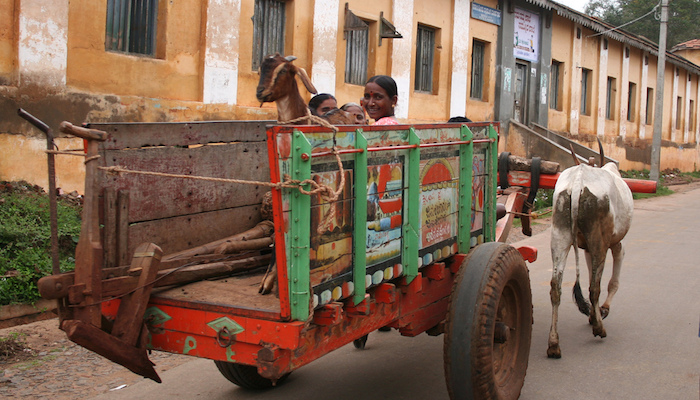By Prabhat Patnaik
There has been much discussion in public about the index of industrial production for October 2022 being 4 per cent lower than the index for October 2021; and quite rightly so, since no obvious explanations like a Covid-induced lockdown or even its residual lingering effects can be adduced to explain this fall. Covid, for the present at any rate, is a matter of the past; hence such a sharp and apparently intriguing fall in industrial production in October points to something more basic, some deep-rooted malaise in the Indian economy.
But in focussing on the immediate fall in industrial production, insufficient attention has been paid to the fact that for quite some time now there has been a virtual stagnation in India’s industrial economy. Since the government changes the base year of the index of industrial production from time to time and since comparisons across indices are dicey, let us just take the 2011-12-based index which is the latest we have and examine what has been happening to industrial production according to this index.
Even if we concentrate entirely on the pre-pandemic years, it turns out that between 2011-12 and 2019-20 the total increase in industrial production according to the index was just 29 percent, which means an average annual increase of 3.2 per cent. This is not only extremely low in itself, but is lower than the average annual industrial growth rate over any previous period with comparable end-years. Between 1951 and 1965, the dirigiste years much derided by neo-liberal economists for keeping the economy tied to a low level of GDP growth (sometimes facetiously called the “Hindu rate of growth” because of its unchanging character), the rate of growth of industrial production was in excess of 7 per cent per annum according to the 1956-based index. Even the decade 2004-05 to 2014-15 had witnessed an average annual growth rate of 5.87 percent if we take the index of industrial production with 2004-05 base.
The recent years in short have witnessed a drastic slowing down of the industrial growth rate. This is in sharp contrast with the impression conveyed by neo-liberal economists through their incessant talk about this regime having accelerated the growth rate of the economy. The neo-liberal period as a whole witnessed a slowing down in the growth rate of the index of industrial production compared to the average of the previous post-independence years; but additionally, within the neo-liberal period itself we find a slowing down in the more recent years. Moreover small industrial units and petty production units are inadequately represented in the index of industrial production. Considering the fact that they have faced a severe crisis in the more recent period not just because of the general withdrawal of support from this sector by the government as part of neo-liberal policy, but also because of the Modi government’s specific acts of commission like demonetisation, and the introduction of the Goods and Services Tax, the actual slowing down of industrial production must have been even greater than shown by the index of industrial production.
The feebleness of the post-Covid recovery acquires significance in this context. Normally, if there is a disruption in the supply of goods, then demand gets postponed and the overcoming of this disruption is actually followed by a boom because some element of the pent-up demand gets subsequently added to the normal demand. This is why war years are followed usually by a boom in the immediate post-war period, which is referred to as the “aftermath boom”. But the fact that despite the disruption caused on account of Covid, the post-Covid period has seen no such boom, but on the contrary a continuation, even an accentuation, of the earlier stagnation, shows that this stagnation is now the norm for the economy, which raises the question: why has India’s industrial economy become stagnant?
There are two factors here of great importance. One is that the market for industrial goods has been getting more and more constricted over time because of the growing inequality in income distribution. The purchasing power in the hands of the mass of the people has not just remained meager but has actually shrunk relatively because of the huge increase in income inequality under neo-liberalism. The tendency towards such an increase was already underscored by Piketty and Chancel who argued that the share of the top 1 per cent of the population in national income which had fallen to 6per cent in 1982, increased to around 22 per cent in 2013-14 and 2014-15
That this tendency has continued after 2014-15 is indubitable. In fact the quinquennial large sample survey of consumption expenditure by the NSS for 2017-18 showed, according to reports leaked to newspapers (the government itself had suppressed the findings of the survey), that the per capita real expenditure in rural India had declined between 2011-12 and 2017-18 by as much as 9 per cent. This decline must have been particularly sharp for the working people since the upper segment of consumers consisting of landlords and rural capitalists is unlikely to have been victims of any income compression. Such a decline in real consumption expenditure in rural India would naturally affect the demand for industrial goods.
An important feature of neoliberalism is that the incomes of the urban working people get linked to those of their rural counterparts. Their incomes in other words move synchronously, because in periods of rural distress there is greater migration to urban areas which swells the reserve army of labour in the latter and depresses the incomes of the urban working people. Hence the decline in purchasing power of the rural workers must have been accompanied by a similar decline for urban workers as well. The demand for industrial goods emanating from the working people as a whole must therefore have shrunk because of this.
The strangulation of the small scale and petty production sectors that was mentioned earlier contributes to this growing inequality and hence growing constriction of demand. It has arisen both because of the general operation of the neo-liberal regime, and also because of the specific follies of the present government which were superimposed upon it. It has forced a substitution of products of the large-scale sector for those of the strangulated sectors, but this very process of substitution leads to a restriction of demand in the economy since consumption is greater per unit of output (and hence per unit of income) of the substituted sectors compared to the substituting sectors.
But then, it would be asked, what about the demand for industrial goods coming from the surplus earners, who are the beneficiaries of the income distribution shift? There is no doubt that in the early years of neoliberalism the pent-up demand of the surplus earners for a whole range of industrial goods not domestically available till then, was a big factor spurring industrial production. But after the domestic production of easily-producible goods, the sheer availability of cheaper imports would be a deterrent to any further import substitution. A rise in surplus after that point will create demand that leaks out into imports.
This is precisely what appears to be happening: when industrial production is further broken down into sectors, the two sectors that show lower growth are capital goods and consumer durables. In October 2022 for instance the index for consumer durables was significantly lower than the average for 2011-12 and that for capital goods barely higher. In both cases an obvious reason for the low growth is import dependence. Domestic output is supplanted by imports both in the sphere of capital goods and consumer durables.
The roots of stagnation therefore lie in the nature of the neo-liberal regime: the working people experience a growing ex ante paucity of purchasing power, while the surplus earners who have growing purchasing power ex ante, spend only a part of it and do so to a greater extent on imported goods. In short, in addition to the tendency towards over-production arising from the growing inequality in income distribution there is an additional element arising from the higher propensity among surplus earners to import consumer durables and capital goods.
The only intervention that the present government can be said to have undertaken against this tendency is to encourage larger private expenditure on infrastructure projects by arranging loans from public sector banks, though whether this was motivated by a desire to stimulate the economy or by sheer cronyism (in an obvious manner) remains a moot point. This intervention evidently has been woefully inadequate, but it has landed public sector banks with vast stocks of highly risky assets. Infrastructure projects typically involve extraordinarily long gestation periods and also take long to break even, ifat all. Their financing should be the responsibility of specialised financial institutions that can provide long-term loans. By making public sector banks, which get their resources from deposits by the public, responsible for infrastructure financing, the Modi government is putting them to serious financial stress. (IPA Service)
Courtesy: People’s Democracy

 Bharat Jodo Yatra In Delhi On December 24 Will See A Battle Of Nerves Between Modi And Rahul
Bharat Jodo Yatra In Delhi On December 24 Will See A Battle Of Nerves Between Modi And Rahul 